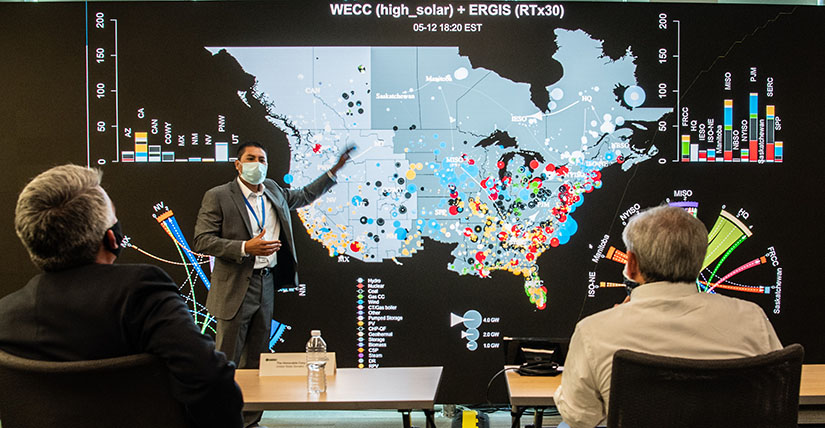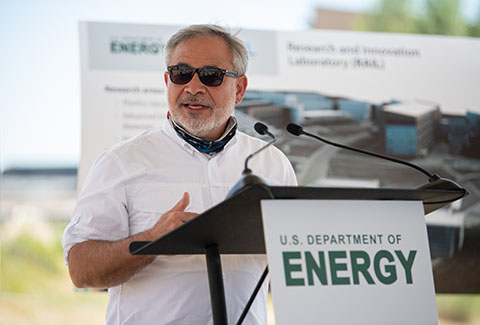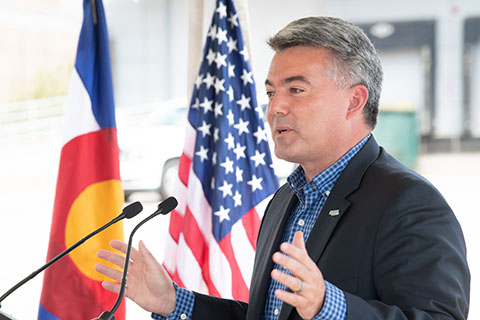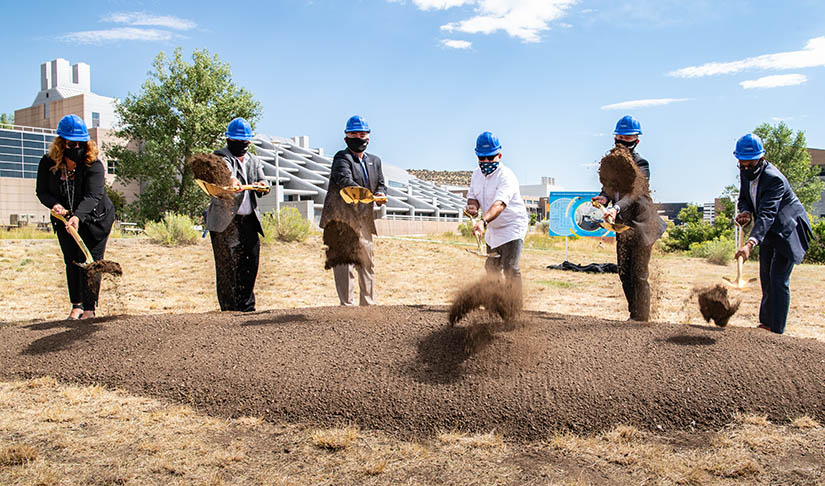ARIES and RAIL Promise To Advance Renewable Energy Innovation and Integration

Secretary of Energy Dan Brouillette introduced two new acronyms to the National Renewable Energy Laboratory’s (NREL’s) lexicon on Aug. 12: RAIL and ARIES. RAIL stands for Research and Innovation Laboratory, while ARIES is short for Advanced Research on Integrated Energy Systems.

Brouillette’s visit to NREL marked his first stop there since becoming head of the Department of Energy (DOE) in December. While at NREL, the secretary participated in a groundbreaking ceremony for the new RAIL building on NREL’s South Table Mountain Campus. He was joined by U.S. Senator for Colorado Cory Gardner.
Martin Keller, director of NREL, said RAIL will provide “much needed” laboratory space for researchers looking into a gamut of efforts including plastics upcycling, next-generation batteries, and advanced energy materials.
“When it’s complete,” Brouillette said, “this laboratory will be a wellspring of ideas and innovations that have the potential to change not only the marketplace here in America but the marketplace around the world.”
The RAIL building is budgeted at between $15.5 million and $16.5 million. The design and build contract for the project is expected to be awarded by the end of the year. The building, estimated to be from 15,000–20,000 square feet, is targeted for completion in the fall of 2022.

Laboratory space is at a premium at NREL, the only DOE laboratory dedicated to renewable energy research. The last building added to the NREL campus was the Energy Systems and Integration Facility (ESIF) a decade ago.
The researchers working in RAIL will come from NREL’s Mechanical and Thermal Engineering Sciences (MTES), Materials and Chemical Science Technology (MCCS), and BioEnergy Science and Technology (BEST) programs. The new facility will provide multipurpose lab space for cross-disciplinary research at the intersection of chemistry, materials science, and bioscience.
Meanwhile, the ARIES program builds upon existing capabilities at ESIF and the Integrated Energy Systems at Scale (IESS) capabilities at NREL’s Flatirons Campus near Boulder, Colorado. Researchers are able to provide real-time testing of equipment connected to the electrical grid. Equipment at ESIF offers as much as 2 megawatts of power. With ARIES, IESS will allow for research requiring 10 times that amount. A 100 Gbps fiber-optic link will connect the two campuses with external connections to other national laboratories and industry partners.
“ARIES will enable DOE and industry to de-risk the technical, the operational, and the financial impacts of large-scale integration in a unique environment that doesn’t currently exist,” Brouillette said. “It’s designed to address the challenges of developing our integrated advanced energy systems of the future … including the challenge of controlling tens of millions of interconnected devices and integrating multiple new energy technologies that haven’t previously worked together.”
The ARIES platform will provide a virtual emulation environment that uses advanced computing and digital real-time simulators. ARIES will help researchers address the challenges of integrated energy systems at scale in the areas of energy storage, power electronics, hybrid energy systems, future energy infrastructure, and cybersecurity—five research areas of critical importance as devices scale up from the hundreds to millions.

Learn more about the ARIES platform and NREL’s vision for turning today’s energy challenges into tomorrow’s solutions.
Last Updated May 28, 2025
